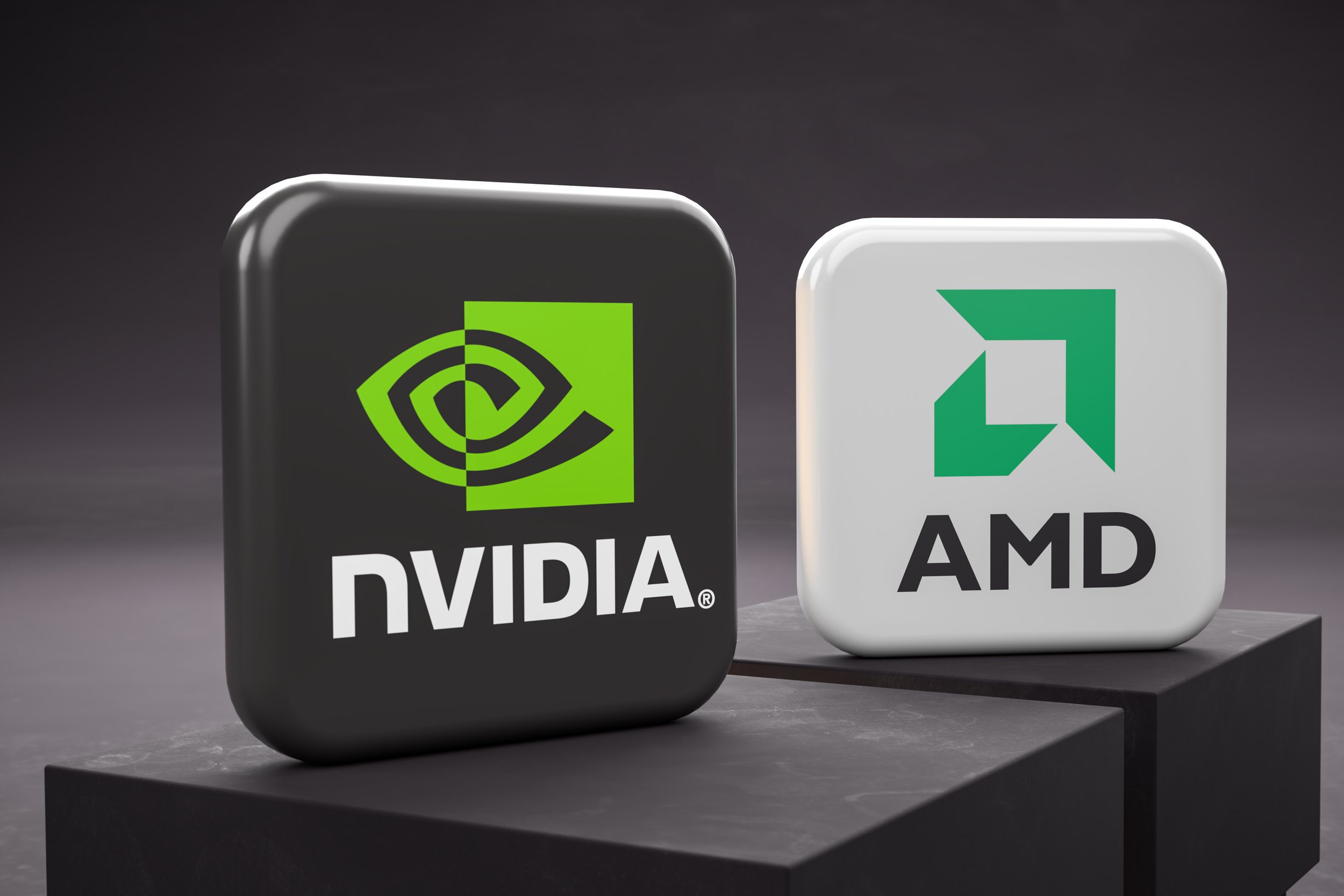AMD RX 6700 XT vs Nvidia RTX 3070: Which Is Better?
Whether you’re building a new PC or looking for upgrades to your existing computer, it can be easy to feel overwhelmed by the vast amount of component options out there.
Of all the components you choose, perhaps none will feel more important than the GPU.
For gaming, your graphics card is one of the most influential parts of your computer, potentially allowing you to take advantage of some of the latest advancements in gaming technology and enjoy them at top performance.
With so many GPUs available from different companies, it can be tough to know which is best for you.
The differences aren’t objectively better or worse in many cases — just different. That’s why our WTFast experts are walking you through the differences between two of the best graphics cards for those on a budget.
The AMD RX 6700 XT and the Nvidia Geforce RTX 3070 aren’t the newest graphics cards, but they are both quality options at lower prices than the latest releases.
If you’re considering a GPU upgrade or just looking to build a new computer, today’s WTFast guide is for you.
Let’s jump right in!
AMD vs. Nvidia
To understand the differences between these two cards, you need to have some context surrounding the world of GPUs in 2022. Let’s start by comparing AMD and Nvidia.
When it comes to graphics cards, there are two major players — but only one clear leader. AMD and Nvidia are the big names, but Nvidia has consistently held a substantial lead in both popularity and performance.
AMD’s marketing has kept them competitive through the years, but at no point have their GPUs truly outshined Nvidia’s — at least, in most areas.
There are still benefits to an AMD GPU, and their GPUs can outperform a comparable Nvidia GPU for some games and builds at certain settings.
It gets complicated and highly situational, but Nvidia has generally been dominant for good reasons.
What Features Should I Look For?
With that context in mind, let’s talk about how to evaluate which card is better for you.
These GPUs are difficult to compare because they use completely different structures, so many of their specs simply don’t line up. However, they still do the same thing at the end of the day, so we can always compare their performance.
User benchmarks are incredibly helpful for getting an idea of real-world performance for any computer component, GPUs being no exception.
Gaming at High Performance
Performance is a bit of a buzzword in gaming, so let’s make sure we’re on the same page about what we mean. Performance refers to equal parts speed and stability. It’s all about lag — or rather, the lack of it.
Lag is an irregular delay or stutter in your gameplay, and it’s one of the oldest and greatest rivals of gamers everywhere.
You’re likely very familiar with lag, whether it be the extreme cases of rubberbanding (where your character bounces back and forth and can’t move anywhere) or more general cases like stutter (where an animation or input delays for a few fractions of a second or more).
There are tons of factors that can contribute to lag, but having a GPU that can process your game's graphics smoothly and efficiently is crucial.
Gaming at High Resolution
Modern games are constantly pushing the limits of previous-gen graphics, and one of the main ways they do this is by increasing the resolution at which you can play your games.
However, higher resolution doesn’t always equal better. The key is to ensure you’re still playing at a high FPS, at least 60.
Today, many GPUs talk about gaming at 4K and even 8K with Nvidia’s newest RTX 3090. However, if the GPU can’t maintain a smooth framerate, gaming at these resolutions means little to nothing.
New Technologies
GPUs have done more than simply improving their core aspects – they’ve also been adding exciting new features (some more than others).
Of the latest features, ray tracing has received the most publicity and is potentially the most exciting.
With ray tracing, games can achieve better lighting and shadows comparable to cinema and, some say, to real life. Without a doubt, it looks pretty incredible. However, it’s not likely to actively catch your attention. Rather, it will passively deepen your immersion and reduce any jarring moments or visuals.
For more cinematic, story-based games, ray tracing adds exceptional value. For fast-paced multiplayer games? Not so much.
DLSS 2.0 is another popular feature, though this one is exclusive to Nvidia’s RTX cards. DLSS 2.0 upscales your game on the fly through deep learning AI to allow high-resolution gameplay (including 4K) at 60 FPS.
For gamers who want to game at high resolutions, DLSS 2.0 should be a very strong consideration.
How Do I Know Which Card Is Right for Me?
At the end of the day, you’re going to have to decide based on your situation: your budget, your expectations, what games you play, and even what existing components you might already have.
What Games You Play
Not every game can take full advantage of advanced graphics qualities like ray tracing or DLSS 2.0.
If you’re not playing these games, then these factors shouldn’t be much of a consideration unless you’re thinking ahead to the future (as we fully expect ray tracing to expand across many more games going forward).
Why You Play Games
Similar to the importance of what titles you play, the way you play and your reasons for playing can be just as influential in your GPU decisions.
If you’re into highly competitive, real-time gaming (as with online multiplayer shooters, for example), optimized performance is likely your goal. This usually means you aren’t playing at maxed-out graphics settings anyway because you push your speed and FPS at lower settings more effectively.
On the other hand, those who prefer the cinematic experience of games like Cyberpunk 2077 and Horizon Zero Dawn will be much more invested in their immersive experience and achieving the best graphics possible.
Existing Equipment
Keep the context of your gaming setup in mind.
Do you have a 4K monitor that can perform at a good speed for gaming? Regardless of your GPUs capabilities, it can’t magically make your monitor better.
You should also be aware of certain limitations regarding the compatibility of some GPU features with other parts, such as your CPU. Nvidia’s RTX 3070, for example, plays well with a wide range of CPUs (including those from AMD), while AMD GPUs are specifically built to run with AMD CPUs and other components.
The Verdict: Which GPU Should I Choose?
Finally, let’s make a decision. Should you go with the AMD RX 6700 XT, Nvidia’s RTX 3070, or perhaps another GPU? Do you even need a new GPU at all?
In direct comparison, the numbers are very close in general performance, but Nvidia’s RTX generally takes the lead. In some cases, AMD's RX 6700 took a slight advantage, but it all depends on your build.
Nvidia's RTX series is the clear choice if you’re looking to play with ray tracing or at 4K. The 3070 is the best option for budget builders, while the 3080 is a bit greater in terms of performance and price. The 3090 is very new but probably not worth it for most gamers.
Nvidia’s cards are also the only ones with DLSS 2.0, making them exceptionally well-suited for high-resolution gaming.
The benefits of AMD’s card mainly come into play when gaming at low resolution, where they can perform just as well or better than Nvidia’s RTX cards but at a generally lower cost.
Market Considerations
Another thing that unfortunately must be kept in mind is the current state of the GPU market.
GPUs, along with automobiles, medical technology, and more, have been in massive shortage for almost two years now. This is due to a worldwide shortage of semiconductors, an essential component for all these products.
It’s very difficult to find newer GPUs in stock because of this, and even more difficult to find one in stock at a reasonable price. Sadly, skimmers buy up much of the stock when it becomes available and resell the GPUs at huge markups.
Experts predict this shortage should slow down in summer 2022 or early 2023, but of course, things can change – after all, no one predicted this shortage or its length.
If you can stick it out and remain patient, conditions for buying a GPU may improve by next year. In the meantime, AMD GPUs are generally easier to find and cheaper than Nvidia GPUs due to lower popularity.
If you’re looking to start playing as soon as possible, you might consider an RX 6700 as your best option.
Alternatives to a New GPU
While GPUs can definitely improve your gaming experience, they aren’t the only way to do so. If you’re gaming online, no matter what graphics card you use, lag can still ruin your game due to network connection issues.
Put those behind you with our one-stop-shop fix, WTFast’s GPN. Our innovative network solution is all about controlling and optimizing your gameplay data route to the server, getting you the lowest ping and fewest lag issues possible.
Think of it as the autobahn of the internet: no traffic, no speed limit.
Conclusion
Whether you choose AMD or Nvidia’s GPUs, our WTFast GPN is a great solution to take your online gaming to the next level. Keep coming back to WTFast’s blog for more gaming guides and solutions!
Sources:
GPU (Graphics Processing Unit) Definition | Tech Terms
UserBenchmark: AMD RX 6700-XT vs Nvidia RTX 3070 | User Benchmark


